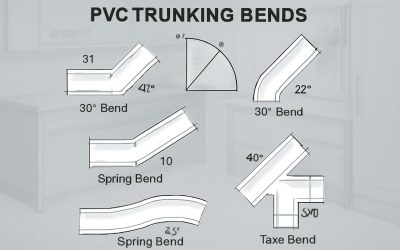
A cable tray is a type of device that is used to support electrical cables. They are normally used in commercial buildings for electrical wiring. Cable trays can be made from a variety of materials, but most commonly, they are made from aluminum or steel. However, there are also composite products, which are made from fiberglass or synthetic polyester resins. Composite trays are known for their high mechanical strength, durability and long service life.
The material used for cable trays has an important impact on the installation. For example, a stainless steel tray is ideal in environments with high heat or extended periods of cold. While steel is strong, it can be difficult to maintain the integrity of the tray when exposed to corrosion. Aluminum is an alternative, as it is lightweight and has a high strength-to-weight ratio. When using aluminum, however, the system must be tested prior to installation.
Other factors to consider when choosing a cable tray include load capacity, fittings and cable types. Some cable trays are specifically designed for single power cable, while others are used for multiple control or signal circuit cables. In addition, you will need to consider the size of the cables you will need to handle. You should also take into account the location and support of the cable tray. This will help determine whether a solid or ventilated bottom is more appropriate.
The most common metal cable trays are made from galvanized iron or aluminum. The best corrosion resistance is found in galvanized steel trays. There are also some options available in hot-dip galvanized, which means that the tray has been bathed in zinc to enhance its performance.
If you are looking for an option that is lightweight and fireproof, you may want to look into composite products. These trays have high mechanical strength, improved resistance to frost and moisture, and are easy to install and transport. They are suitable for both underground and above-ground laying.
If you need a cable tray for a building with an open floor plan, a basket type tray may be a better choice. These are generally used for telecommunications, instrumentation, and low voltage cables. Depending on the application, they may also have a solid cover to protect the cables from debris or falling objects.
If you need to install cable trays in a hazardous environment, you should choose a tray that is made of fire-resistant material. Fiberglass cable trays can be certified to meet ASTM D-635 for flame resistance. Also, if you need to support sensitive communication or fiber optic cables, you can find a tray that meets ASTM E -84/UL 723/Class 1 flame rating.
Whether you are installing a cable tray in a commercial building or a laboratory, it is important to consider the various materials that are available. Choosing the right cable tray is crucial to the safety of both you and your employees. Consider the location of the cable tray as well as the supporting structures, including ceilings and air handling areas.



0 Comments